How Much Does It Cost to Build an App Like Airbnb? - A Comprehensive Guide
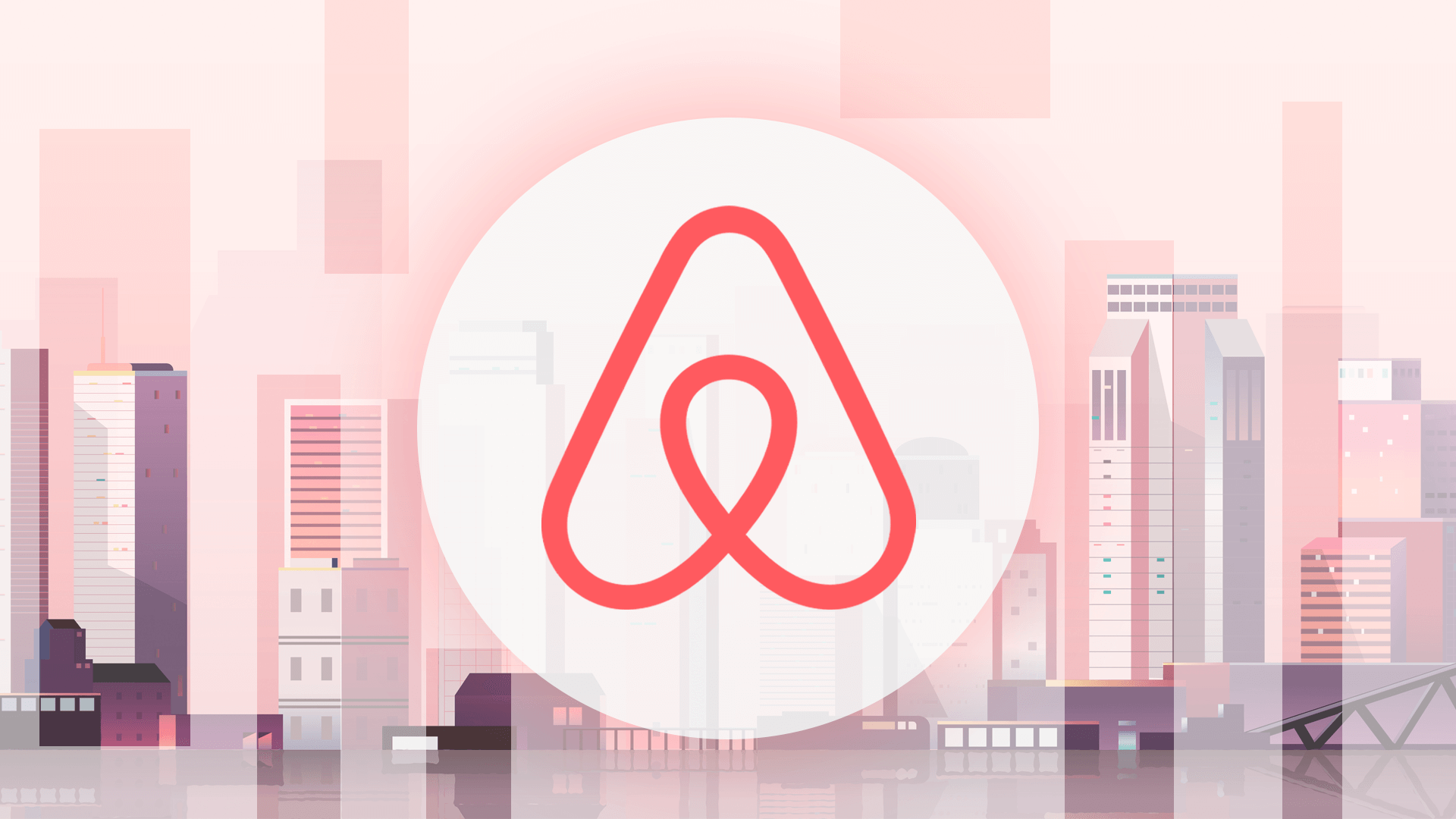
How much does it cost to build an App like Airbnb? - we hear this question quite often. We owe this credit to apps like Airbnb. Let’s understand the growth story of Airbnb with Q2, 2023 investor’s report.
- Airbnb has over 150 million users worldwide.
- In the travel category, Airbnb is the fourth most downloadable app.
- Airbnb revenue touched $2.5 billion, marking an 18% year-on-year growth.
- Airbnb also registered 115.1 million night experiences during this time.
How with a humble start in 2008, the company transformed itself into a multi-billion dollar company? The answer lies in its ecosystem. The success of Airbnb is the result of innovative technology, user experience, and their trust.
Today, several startups and entrepreneurs wish to repeat Airbnb's history. So, if questions like ‘How much does it cost to build an App like Airbnb?’ are bothering you, then this blog is for you.
Understanding the Concept of Vacation Rentals Apps
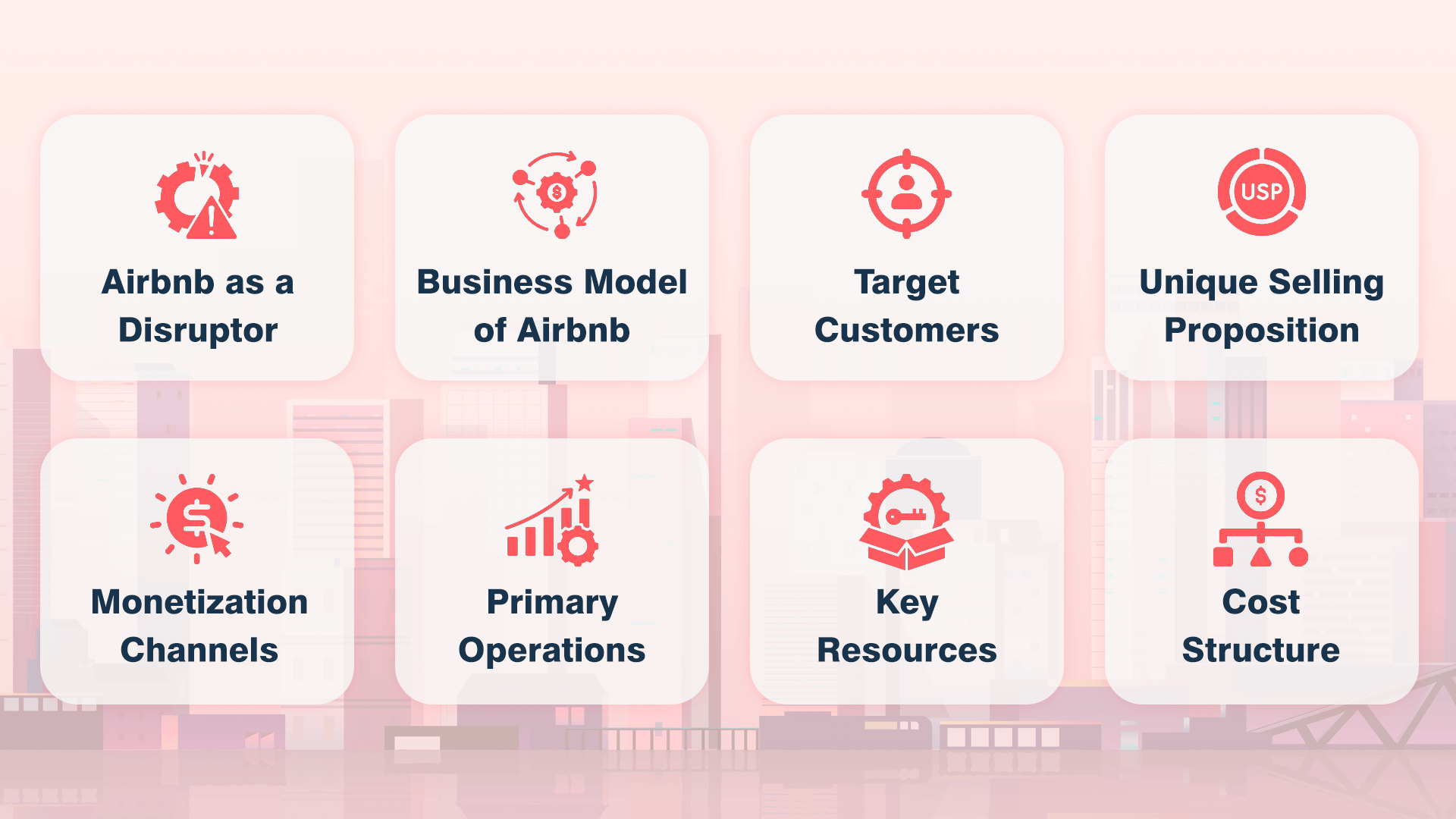
To build a business app like Airbnb, a fair understanding of their working model is necessary. But before that, let's understand how Airbnb disrupted the tourism industry.
Airbnb as a Disruptor
Apps like Airbnb are the industry disruptors. It has transformed the tourism industry completely. Now, travelers get authentic and cheaper lodging options with a few clicks.
With Airbnb, customers (renters) and hosts (property owners) - both are the direct beneficiaries. On one side, customers get a local experience with household facilities at economical rents. At the same time, hosts earn extra income by renting out their studio apartments, cottages, and homestay in a disciplined manner.
We talked about industry disruption, right? The success of Airbnb made the US hotel industry lose 1.3% of hotel nights. Besides, it has created a new market of ‘Digital Nomad’- customers who stay longer, which has added a new segment of customers to its basket.
Business Model of Airbnb
Airbnb acts as a middle agent that connects hosts (property owners) and guests (renters, travelers). In exchange for its services, the Airbnb platform earns a commission. Tenants who take accommodation on rent pay a service charge of 6 to 12% on their bookings. Similarly, hosts also pay 3% of the booking charge. Understand their model in depth, in upcoming section:
Target Customers
Travelers and hosts - both are target customers for Airbnb. Travelers, as they seek accommodation for short-duration lodging. And hosts, who give their properties for rent to these travelers.
Unique Selling Proposition
Airbnb offers unique, affordable accommodations worldwide. Travelers get an enriched experience beyond a mere stay. With Airbnb around, their tenants get a local feel at affordable rates. Similarly, hosts earn hassle free rental income by sharing their space with travelers.
Monetization Channels
Commissions and transaction fees are the primary sources of income for Airbnb. Whenever any traveler books a property through Airbnb platform, it earns. Airbnb gets commission from hosts and transaction fees from travelers. Besides this, it also earns property listing fees, photography fees, and advertising fees from hosts.
Primary Operations
Managing its ‘vacation rental app’ is the primary function of Airbnb. To make its platform user-friendly, it has added several value-added features to its app. This app acts like a bridge that promotes accommodations, provides customer support, and makes the entire customer journey seamless.
Key Resources
The market is filled with several vacation rental apps. Still, Airbnb plays a dominant role. The secret lies in its app. Airbnb uses lightweight, agile technology infrastructure that transforms the brand into a success. Using its technological resources, it has created a community of hosts, travelers, and digital nomads.
Cost Structure
Research suggests that the tourism industry will touch 972.5 Bn by 2031. Considering this potential, several enthusiastic entrepreneurs dream of building a sustainable app like Airbnb.
Unlike traditional hospitality sector, Airbnb does not hold any property. Instead, they act as a bridge between property owners and travelers. They do not lock their capital in fixed assets, but channelize funds in platform development like:
- Platform development and maintenance expenses.
- Customer support.
- Marketing and promotion.
- Legal and regulatory compliance.
Therefore, to start your vacation rental platform, you need to develop a user-friendly platform that is easy to use, manages property listings well, and follows all regulatory compliance.
How Does Airbnb Work?
Airbnb app targets travelers and hosts. For this, it has developed three panels – guests/ renters, property owners or hosts, and the admin panel. Airbnb offers several functionalities, features, and filters, which make the property selection and listing more useful. Let’s dwell deeper to understand the renter's journey on the platform.
Airbnb Working for Tenants or Travelers
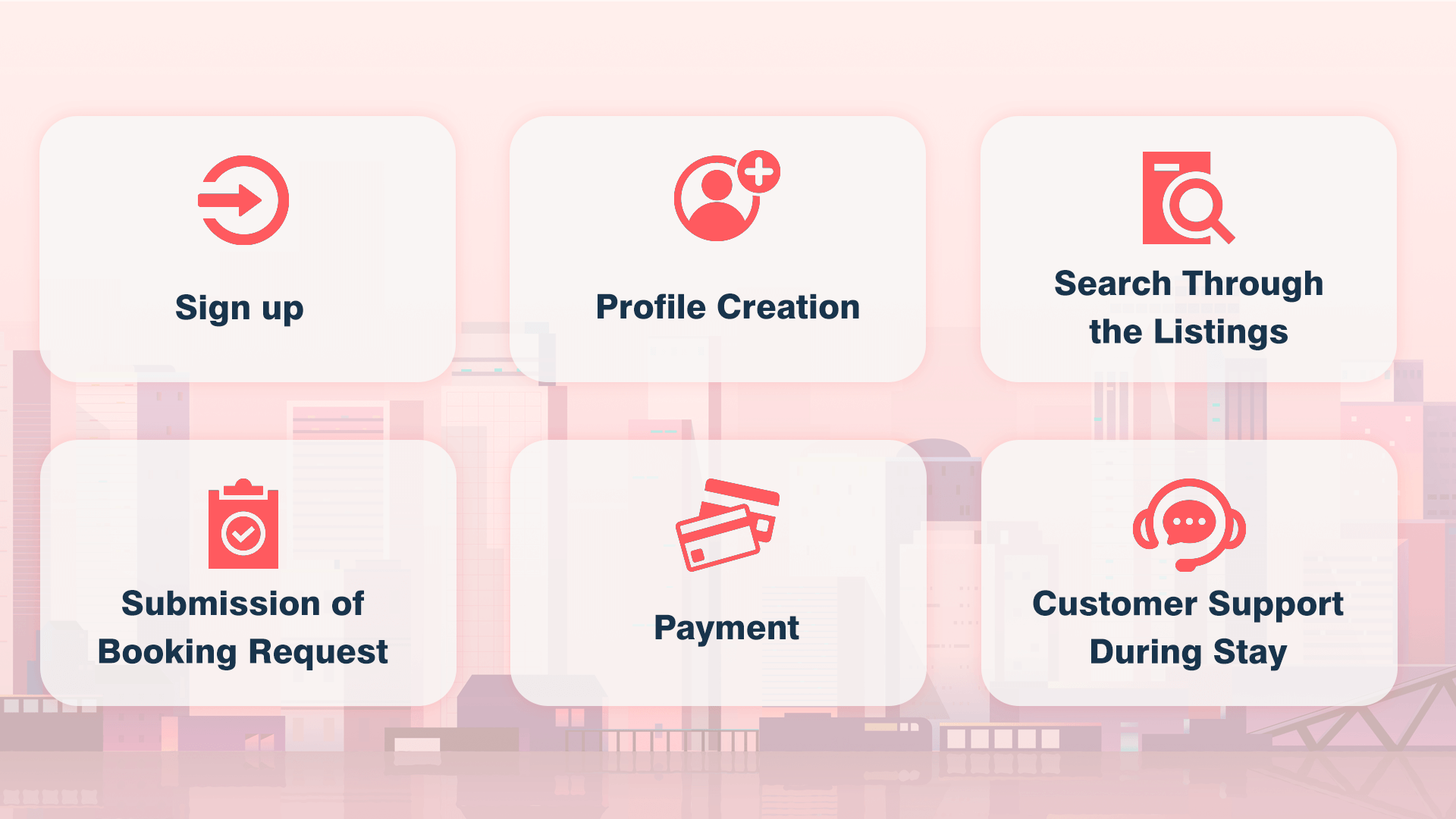
Sign up
Travelers start their vacation rental app journey by signing up on Airbnb. They make their account using their email ID, phone number, or social media accounts. This procedure is similar to account creation procedures on any other app.
Profile Creation
Once a traveler confirms their account, travelers need to provide basic information about themselves like their name, profile picture, and ID number. If they wish, they can also provide more information about their hobbies, interests, and travel preferences. This additional information helps vacation rentals apps like Airbnb to promote listings according to travelers’ interests.
Search Through the Listings
Once travelers complete their profile, they can start booking properties. They can search through the listings, use filters like accommodation type, number of guests, price range, etc., and narrow down their searches.
Apps like Airbnb also provide property reviews and photo galleries. These features make decision-making easier for the renters.
Submission of Booking Request
Once a traveler selects a property, they can submit a booking request. Although, most of the time, they get instant booking confirmations. But many times, hosts like to review the renter profile first. In this case, travelers are notified about the status of their booking request within 24 hours through SMS or push notifications.
Payment
Renters need to pay property charges in advance. To make the booking experience more user friendly, Airbnb has tied up with payment getaways. It allows renters to make payments using credit cards, debit cards, or Google pay.
Moreover, Airbnb enhances traveler experience by implementing safeguard measures. For instance, Airbnb holds the property charge until the next 24 hours after the check-ins. Such practice keeps the quality in control and seeds trust in travelers.
Customer Support During Stay
Airbnb ensures that its travelers enjoy their stay fully. So, they encourage travelers to contact their customer support or host in case of any problem. Nevertheless, such thoughtful gestures again strengthen the trust of travelers.
Airbnb Working for Hosts
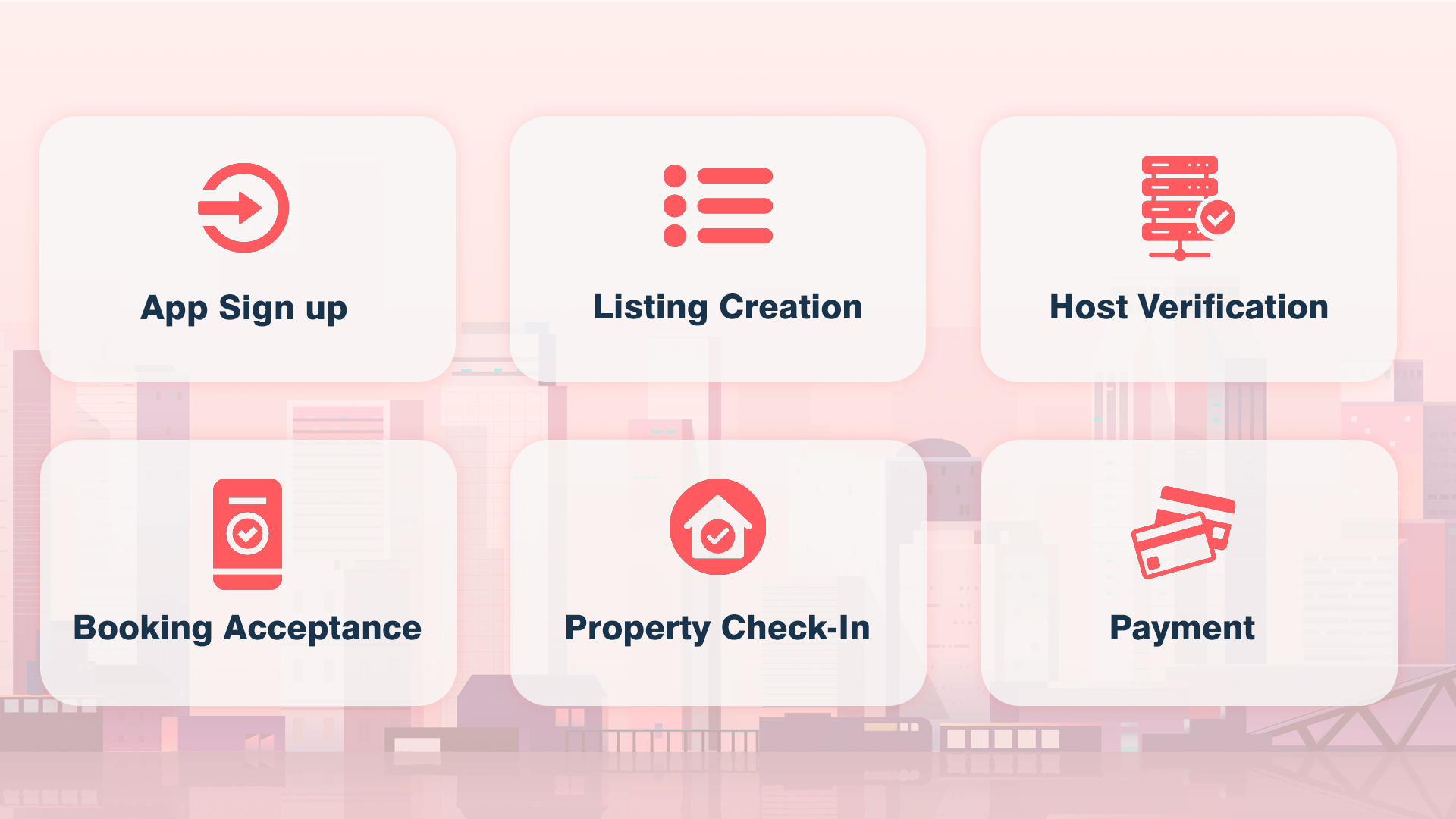
Before starting property listing on Airbnb platform, property owners register on their platform. The host journey graph given below:
App Sign up
Like travelers, hosts must sign up on a web portal or app using their phone number, email, or social media user details.
Listing Creation
Once their account is created, they can list their property as a host. Hosts submit details of their property, accommodation type, amenities, and number of people that it can accommodate. They also set expected rental and terms of use, if any.
Host Verification and Picture Submission
Airbnb demands professional quality photograms on its app. So hosts need to submit either self-clicked professional images or take the help of Airbnb in a photoshoot. Besides this, Airbnb also verifies the host. This step ensures the safety of guests.
Booking Acceptance
Once any guest shows interest in property listing, the host is notified with an SMS or notification. Hosts need to accept or reject booking requests within 24 hours.
Property Check-In
Mere acceptance of the request is not enough. The host needs to provide the renter access to the property. It helps in making the process seamless and easy for travelers.
Payment
As discussed earlier, hosts get their property rentals after 24 hours of traveler check-in.
Factors Affecting the Cost of Apps like Airbnb
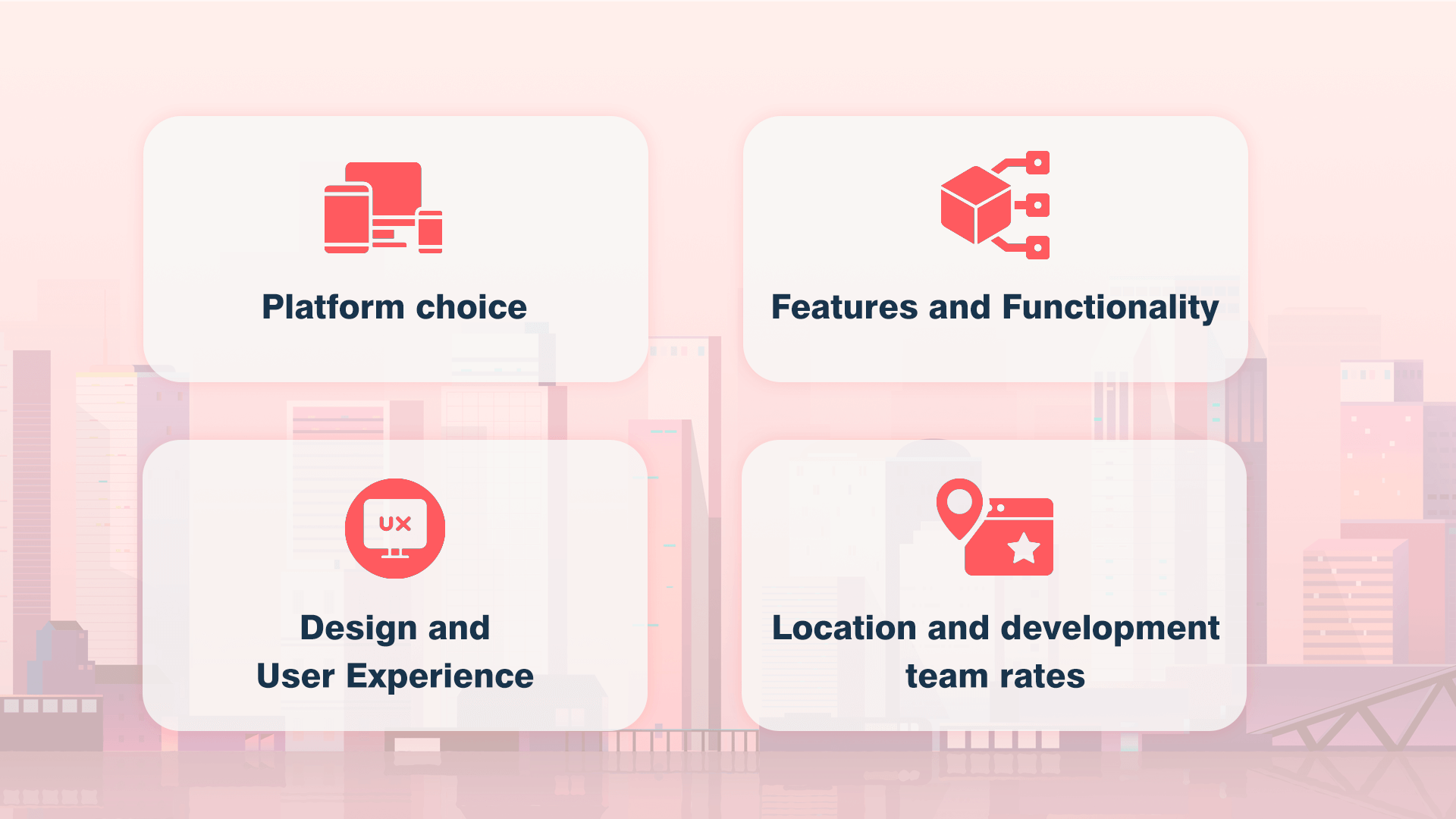
Building an app like Airbnb is a challenging task. So, the cost of the app will depend on several factors. Each of these factors can significantly shoot up the developmental cost. Let’s briefly understand these factors here:
Platform choice (iOS, Android, or Web)
App platform selection depends on factors like target audience, device environment, scope of the project. Besides, each platform has its own intricacies and tool requirements that have an associated cost with it.
For Instance, iOS app doesn't need much device testing compared to an Android app, so building an iOS app is more economical than building an Android app.
However, if you go ahead with apps like Airbnb, which are cross-development apps, then your overall cost will surely head north.
Features and Functionality
Features and functionalities are another expense. The more features you add, the higher will be your app integration and development cost. For Instance, features like wishlist, booking history, property reviews, customer communications, and promotional offers occupy much space. Result? The overall app development cost will go up.
Similarly, functionalities like push notifications, SMS, and payment gateways have third-party integration costs. Apart from this, there is infrastructural cost, too, like iOS or Android platform fee, SSL certificate cost, etc.
Design and User Experience
App designs have a significant role in motivating renters to make their bookings. So, vacation rentals apps like Airbnb need eye-catching designs to lure global travelers. The app design must be simple, user-friendly, and engaging. Creating an excellent UI/UX needs more time. Remember, development time increases the app's developmental cost.
Location and development team rates
Outsourcing your app development is a cost-effective approach compared to hiring an in-house development team. By hiring an expert app development team like Addevice, you not only get expert services. Instead, you save a hell of a budget to invest for marketing your app.
Let’s cover all above factors in detail in upcoming section:
Development Technologies
Any well-designed app can fail if it is not developed using the right technology. Technology selection can directly influence initial development costs, futuristic maintenance and scalability expenses. So, keep the below mentioned pointers in consideration during selection of app development technologies.
- Performance and User Experience: App performance, lag time, and user satisfaction are crucial elements of any development technology. So, choose such technology that generates a good user experience. Afterall, good user experience leads to higher user retention rates.
- Scalability: With time, your app will start gaining traffic. So, selected app technology must support futuristic traffic loads. And that too without demanding any further costs.
- Maintenance and Updates: Some technologies are easier and cheaper to maintain. Over time, these costs can accumulate, so it's essential to consider them upfront.
Native vs. Cross-Platform Development: A Deeper Dive
Native Development:
iOS (Swift or Objective-C): Building natively for iOS means it is using Swift (now more popular) or Objective-C technologies. This technology gives optimized performance for Apple devices. But, it requires a separate codebase for Android. Result? If building cross platform apps, native development technology will double the developmental workload as well as cost.
Pros:
- Swift or Objective-C technologies give optimized performance that ensures a smooth user experience for Apple users.
- It provides immediate support for the latest features.
- It enables extensive documentation and community support from Apple.
Cons:
- Requires a separate codebase for Android that will shoot up the overall development cost.
- Developing an app for two platforms can lengthen the release time. Result: higher lag time.
Android (Java or Kotlin): For Android, Java and Kotlin are both considered good technologies. However, Kotlin is now a highly favored technology for its concise syntax and enhanced functionality. Although, while you get an optimized experience for Android devices, it will again require a different codebase from iOS.
Pros:
- It is easy to customize Kotlin for UI and features specific to Android.
- Android enjoys a wide market share, so this technology ensures a broad audience reach.
- Multiple developer tools and libraries are available for Kotlin.
Cons:
- Numerous devices and screen sizes make testing and optimization challenging.
- As they say, one’s gain is another’s loss. The same is true in the case of Kotlin. Here you may need a different codebase for iOS.
Several app development technologies fall into this category. These are:
Flutter (Dart): Powered by the Dart language, Flutter has gained significant traction for its 'write once, run anywhere' philosophy. It has a widget-based architecture that makes UI development just like a breeze.
Pros:
- A single codebase will work for both iOS and Android.
- It has wide support for various widgets that help with quick UI development.
- The Flutter community is expanding, making plugins and support readily available.
Cons:
- It lacks many functionalities to develop an established platform.
- Flutter apps can be larger in size compared to native apps.
React Native (JavaScript): React Native is developed by Facebook. It uses JavaScript to build components. React Native has a vast community with many plugins and modules. React Native technology enjoys device-specific features that bridge the gap between native and cross-platform.
Pros:
- React Native technology has rich resource support, like plugins and modules.
- This technology has Facebook support. Such rich support ensures consistent development and updates.
Cons:
- Some of the native functionalities require native modules. Effect? App development takes more time.
- It faces memory management issues.
Xamarin (C#): Xamarin is a Microsoft-owned framework. It uses C# language for coding that allows developers to share up to 90% of their code across platforms.
Pros:
- It has high code reusability and performance.
- It has Microsoft support that guarantees stability and updates.
Cons:
- Xamarin apps can be bulkier than their native counterparts.
- Some advanced features come with added licensing costs.
The selection of development technology depends on several factors like time, cost, features, and functionalities. While Native development offers a high degree of optimization, cross-platform solutions offer time-saving and cost-savings.
Choosing the Right Platform for Your App like Airbnb
We have slightly covered this part before. In this section, we will highlight the pros and cons of iOS, Android, or a web platform.
iOS Platform
Pros:
- iOS users spend more on apps. So, vacation rental apps that target the luxury segment will get a high-monetizing audience on iOS.
- iOS has restricted device variations. So, your app will get a more consistent development and testing environment.
- The iOS App Store has streamlined guidelines that make the app approval process quicker.
Cons:
- While targeting a global audience, the iOS platform will become costlier.
- Limited customization
Android
Pros:
- Android has a massive reach in the smartphone category. This will provide you with a wider audience base.
- With Android, you will get more freedom in app design, functionality, and distribution.
Cons:
- The vast variety of devices and OS versions can lead to longer testing and optimization phases.
- Android users spend less on app purchases compared to iOS users. Result? You will notice slow monetization.
Web Platform
Pros:
- Users can access your app from any device with an internet connection and a browser.
- One codebase lowers development and maintenance costs.
- Web apps can be indexed by search engines, driving organic traffic and boosting visibility.
Cons:
- Web apps might not be as snappy or smooth as native apps.
- Accessing certain native device functionalities (like camera and GPS) can be challenging or inefficient.
Considering Cross-Platform?
You can go for cross-platform apps. By leveraging frameworks like Flutter or React Native, you can have a single codebase on both platforms. While there are compromises in ultra-fine optimization, the time and cost savings make it an enticing option for many.
Features and Functionality: The Heartbeat of Your App
Features and functionality are the lifeblood of an app like Airbnb. But there is no end to the features. Still, there are some crucial features that your MVP app must have. These features are:
- Property listings: Users love to explore property listings. It helps hosts to showcase their property offerings to travelers. Moreover, property listings open a monetization channel where your business can earn a fee on premium listings. (like sponsored links in Google Ads)
- User profiles: add a touch of personalization. It also helps in developing a safe user community.
- Booking systems: You can add filters. This section will bridge the renters and hosts together with booking.
- Payment gateway: Payments are not merely transactions. They symbolize trust. They offer assurance to hosts that they will receive their rent in exchange for granting access to their property.
But you can’t rely on selective payment methods. With the rising popularity of online payment methods like Google Pay, integrating multiple payment gateways can further bolster this trust and enhance user convenience, benefiting your venture.
With support of a good development technology, you can add as many features and functionalities to your vacation rentals apps later. So initially, you can start with MVP, and later expand it to new heights.
Design and User Experience: First Impressions Last
Remember, a stellar app is not just about what it does, but also about how it makes the user feel. Come, let’s dive into the world of design:
User-Friendliness: A user-friendly interface is a necessity. Users should glide through your app, not grapple with it. An appealing design is more than aesthetics and creates intuitive, seamless interactions.
UX and UI: UI and UX are the unsung heroes. They dictate how users interact with your app. So, always focus on designing a memorable customer journey that starts with a memorable user experience.
Location and Development Team Rates
Development team cost is a significant differentiator. Once you outsource your app-building job, the next question arises: where? Believe it or not, the geographical location of your development team can be a game-changer in costs. You may need their services later in app maintenance, too. So you can’t ignore experience and expertise. These two elements together will lead you to reliability. For more insights on creating a booking app, check out how to create a booking app.
We advise you to go for experienced app developers like Addevice. We bring skills, insights, foresight, and passion to the table. Our team will make the app development process smoother and more effective.
Estimated Costs to build an app like Airbnb
You might have gotten a rough idea about the expected cost requirement for building an travel app. We will cover the estimated cost in detail in this section.
Platform Prerequisites
The platform you decide upon – whether web, Android, or iOS – is bound to be a significant cost determinant. Refer to below data for a clearer picture:
Overall Development Cost is like this:
| Development Segmen | Web (Hours) | iOS (Hours) | Android (Hours) | Cross-Platform (Hours |
|---|---|---|---|---|
| Guest Functionality | 511 | 389 | 389 | 778 |
| Host Functionality | 222 | 203 | 203 | 406 |
| Central Administration | 225 | N/A | N/A | N/A |
| Integration | 65 | 58 | 61 | 119 |
| Design & User Interface (UI/UX) | 140 | 150 | 120 | 270 |
| Assurance of Quality | 456 | 342 | 342 | 684 |
| Management of Project | 228 | 171 | 171 | 342 |
| Aggregate Time | 1,847 | 1,313 | 1,286 | 2,599 |
| Estimated Cost | $92,350 | $65,650 | $64,500 | $130,150 |
Development cost assumed @ $50 per hour.
Similarly, here is region wise cost breakdown for further understanding.
Development Cost Estimates by Region and Hourly Rate
| Region | Hourly Rates (USD) | Web Development Cost Range | iOS Development Cost Range | Android Development Cost Range | Cross-Platform Cost Range |
|---|---|---|---|---|---|
| USA/Canada-based | $50 - $250 | $92,350 - $461,750 | $65,650 - $328,250 | $64,300 - $321,500 | $73,000 - $365,500 |
| Eastern Europe | $20 - $150 | $36,940 - $277,050 | $26,260 - $196,950 | $25,720 - $192,900 | $29,300 - $220,000 |
| Western Europe | $30 - $170 | $55,410 - $313,590 | $39,390 - $223,110 | $38,580 - $218,620 | $43,500 - $246,000 |
| Australia | $50 - $150 | $92,350 - $277,050 | $65,650 - $196,950 | $64,300 - $192,900 | $73,000 - $219,000 |
| India | $10 - $80 | $18,470 - $147,760 | $13,130 - $105,040 | $12,860 - $102,880 | $14,500 - $115,500 |
Feature Fundamentals
Starting with a foundational Airbnb-inspired app with basic features and a streamlined design? Anticipate a development span of approximately 4 months, with costs oscillating between $25,000 and $35,000. But here's where things get interesting: including new features, leveraging state-of-the-art technology stacks, and prioritizing an unparalleled user experience can drive these numbers northward. But ultimately, it's the intricacy and innovation of features that will command your final investment.
Design Dynamics
Beyond mere functionality lies design, a domain that marries aesthetics with user-centricity. Investing more in design customization can stretch your budget, but here's the golden nugget: top-tier design invariably equates to superior user loyalty and engagement.
Team Talks
It's not just about the 'what'; it's equally about the 'who.' The caliber of your chosen development team, whether you lean towards in-house or outsourced expertise, will dictate cost variations. And this isn't merely a number game – it's about the tangible and intangible value seasoned developers infuse into the project. Their wisdom, foresight, and expertise are often worth their weight in gold.
Conclusion
Creating an app that rivals Airbnb's stature is no small feat. It's a calculated blend of the right features, impeccable design, and a team that not only understands your vision but amplifies it. With teams like Addevice on your side, you're taking more than just a leap of faith. Instead, you're making a well-informed leap towards success.
Addevice team has sound experience in building vacation rentals apps. Our team can give tangible form to your intangible plan and help you in launching your apps like Airbnb.
App Development Trends, App Development Cost, IOT Development, Development Team, Cross-Platform, App Framework, IT Outsourcing, AI Chatbot, App development, iOS App, Tiktok App, Instant Apps, Trip Planners, Business Strategy, Mobile Monetization, Uber App, Wallet App, Monetization Strategies, Cross-Platform App, Mobile App, AI, Virtual Assistant App, App Review, Video Meeting,
Estimate Your Airbnb-Like App Project Cost
Discover the costs involved in developing an app similar to Airbnb.
Our Approach Includes:
✅ Thorough cost estimation
✅ Customized solutions for your project
✅ Proven success in app development
FAQ
The cost of developing an application similar to Airbnb mainly relies on certain elements such as functionality and features, iOS/Android support, sophisticated design, APIs integration with other services, and rate pricing for developers’ hours. We have brought together these components into our easy to follow guide that explains why each contributes to the final price.
Although it might be difficult given that everything depends on your individual needs, our guide presents the price range for diverse development options. Examining critical elements influencing price gives insights on estimated amount required in budget and appropriate decision making.
Certainly, it identifies all possible expenses and elaborates on how to cut down your purse strings. We give you practical tips on prioritization of essential features, selection of appropriate technology stack and development strategy that assist you in minimizing costs while providing the high level quality and adequate functionality of the Airbnb-like app.